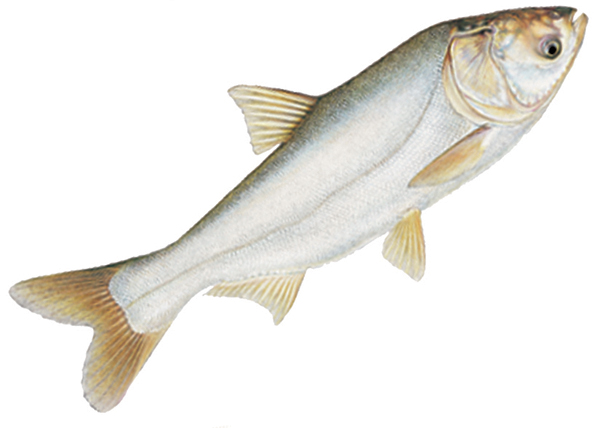A possible invasion into the Great Lakes of several of the seven species of carp found in North America, but not in the Great Lakes – the silver and bighead carp (known collectively as Asian carp) – has raised concerns. These concerns are detailed in
Asian carp: Threats to the lower Great Lakes and St. Lawrence River?, a new fact sheet produced by NYSG Fisheries Specialist
David MacNeill and NYSG’s Coastal Education Specialist
Helen Domske. Silver carp, noted for their high-flying jumping behavior, have seriously injured people aboard watercraft.
“This fish is a threat because it is very prolific – it breeds very readily, and there are places in its range along the Mississippi River and the Illinois River where it is now the dominant fish species,” says Domske. “Asian carp are filter feeders. And like the mussels, these carp love to eat plankton. And when I say plankton, keep in mind that all fish start out as a type of plankton.”
Adds MacNeill, “Plankton are the energy sources that drive much of the open water food web and are the only food for fish larvae and species like alewife.” Alewife are the plankton-eating fish that are preferred prey for predatory fish like trout and salmon. The big question,” says MacNeill is: “If the carp get into the Great Lakes, could they affect the multimillion dollar trout and salmon fisheries?”
Both Domske and MacNeill agree that if Asian carp get into one of the Great Lakes, there would be nothing to stop them from moving throughout all of the Great Lakes. “We may not be able to get rid of the invasive species that have already entered the system, but we need to make sure that we do all that we can to prevent the carp from getting in,” says Domske.
The carp have been found in a ship canal that connects Lake Michigan to the Mississippi River, which many people are calling to be blocked off so there is no way the water could flow in between the lake and the river. “Many scientists believe that hydrological separation would be a sure way to keep them out,” says Domske. Economically, if the Asian carp did make its way into the Great Lakes it could create a negative impact: “The canal does move a lot of barges,” says Domske. “But just speaking from a scientific standpoint, closing it certainly could be one of the most effective and attainable means to block that connection from Asian carp into the Great Lakes.”
— Paul C. Focazio

Silver carp artwork by Joseph R. Tomelleri